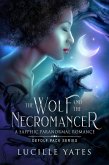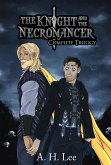The Necromancer: or The Tale of the Black Forest is a thrilling anthology that expertly threads together the darker undercurrents of late 18th-century German literature. This collection delves into themes of supernatural intrigue and the perils of ambition, encapsulating the style prevalent in the gothic tradition. Readers are treated to a rich tapestry of narratives, each exploring the eerie silence and shadowy mysteries of the Black Forest. Amidst these, standout stories exhibit a masterful employment of suspense and psychological complexity, placing the collection firmly within the pantheon of Gothic literature. The literary prowess of authors such as Carl Friedrich Kahlert and Ludwig Flammenberg is unquestionable, as they weave narratives that not only entertain but also challenge the social and existential mores of their time. These story collections draw from the burgeoning Romanticism and Sturm und Drang movements, enriching the anthology's thematic depth. Through their diverse perspectives, the authors provide an enlightening glimpse into the cultural zeitgeist, with narratives that simultaneously embrace and critique the era's fascination with the unknown and the sublime. This anthology is essential for readers interested in exploring the multifaceted nature of gothic storytelling. The Necromancer offers a unique opportunity to experience a convergence of vivid imagination and historical reflection. Its pages are filled with tension, curiosity, and the continuous dialogue between fear and fascination. This collection not only broadens one's literary horizon but also serves as an educational tool, encouraging readers to engage with the enduring allure of Gothic literature.
Dieser Download kann aus rechtlichen Gründen nur mit Rechnungsadresse in A, B, BG, CY, CZ, D, DK, EW, E, FIN, F, GR, H, IRL, I, LT, L, LR, M, NL, PL, P, R, S, SLO, SK ausgeliefert werden.









